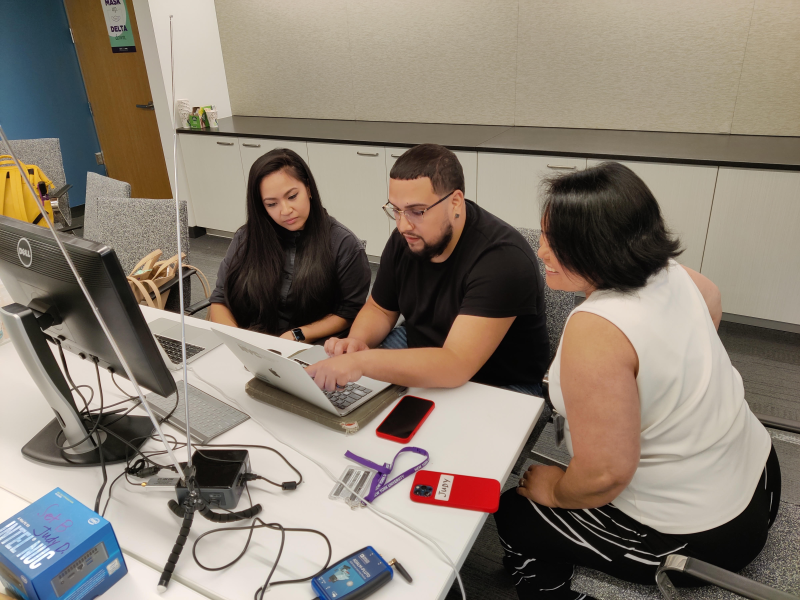Revolutionizing graduate education: Morgan State University's game-changing TA program
Innovation thrives when challenges are met head-on, and that's precisely what Morgan State University's Evaluating an Innovative, Structured Teaching Assistantship Program: Impacts on Student Success and Career Readiness initiative — funded by the U.S. National Science Foundation Innovations in Graduate Education program —exemplifies. The initiative redefines teaching assistantships (TA) as tools for professional and personal growth through structured mentorship components. This article showcases the challenges the initiative addresses, its approach to those challenges and its impacts in preparing students for science, technology, engineering and mathematics graduate work.
The challenge: A status quo that needed realignment through structured mentorship
Graduate programs across the United States often relegate teaching assistants to mundane tasks, such as grading and administrative support, rather than leveraging their potential to develop future-ready professionals. Often, the reluctance of faculty and administrators to entrust graduate students with substantive teaching responsibilities is a significant hurdle. As Mark Garrison, the initiative's leader, put it, "The teaching assistantship model needed an overhaul — one that would transform TAs from errand runners into empowered STEM educators or industry leaders."
The approach: A blueprint for excellence
Morgan State's innovative teaching assistant program is unlike any other. It requires TAs to complete two graduate-level courses that equip participants with robust skills:
- Introduction to higher education Instruction: This course equips TAs with foundational teaching skills.
- Specialized assessment design: This groundbreaking course developed by psychometric and assessment experts teaches TAs how to measure and enhance student outcomes effectively.
The program approach ensures that TAs are not just participants but transformative contributors in the classroom. As Garrison states, "We require a structured, complex program that develops TAs as both a recruitment tool and a training tool."
In addition, the program's holistic design incorporates three key aspects:
- Mentorship training enabling faculty training to coach and guide TAs in managing classes and honing their interpersonal skills.
- Professional development through which students attend weekly seminars on essential topics such as work-life balance, syllabus creation, and research mentorship.
- Comprehensive assessment tools leveraging the university's Center for Predictive Analytics tools and expertise to measure the program's impact on student success and career readiness.
Program impact: A leap toward transformation
The results have been remarkable. Students and faculty participants show relevant and impactful readiness to be contributors in their fields. Impacts include:
- Increased TA effectiveness in STEM and non-STEM disciplines, including English and history.
- Improved career readiness, with TAs reporting higher confidence in their teaching and leadership skills.
- Increased faculty buy-in, shifting attitudes toward TAs as legitimate contributors to academia and professional development.
- A replicable framework for other institutions.
Garrison highlighted the broader implications, saying, "Learning how to instruct and mentor isn't just about entering the teaching profession. To build high-performing STEM leaders in academia or the corporate world, we need to teach how to guide and teach others. Those skills are highly transferable."
Through this program, students not only receive personalized mentorship from seasoned faculty but also learn to become mentors themselves. Guided by a reflective teaching model, TAs engage in structured mentoring activities where they are coached on how to provide constructive feedback, foster collaboration and inspire confidence in others. These mentorship sessions are complemented by workshops that emphasize the transferability of these skills, showing them how to coach peers and undergraduate students effectively. By being both recipients and providers of mentorship, TAs gain invaluable insights into leadership and relationship-building, creating a ripple effect of growth and empowerment throughout the academic community.
Opportunities for collaboration: Partnering with Morgan State
For institutions inspired by Morgan State's success, collaboration is key to implementing parallel initiatives. Here are ideas to get started:
- Workshops and knowledge sharing: Host joint training sessions with Morgan State's faculty and TAs to adopt best practices.
- Adopt the framework: Leverage Morgan State's curriculum and assessment tools to enhance your TA programs.
- Research partnerships: Collaborate on longitudinal studies to explore TA program impacts across diverse academic disciplines and diverse graduate student populations.
"We anticipate using these tools over a decade to determine completion rates and career trajectories," said Garrison. "They're available for others to implement or modify."
Morgan State’s TA program is an inspiring model other universities across the nation can adopt today to mentor STEM leaders to contribute and build others for relevant roles in academia and industry.

